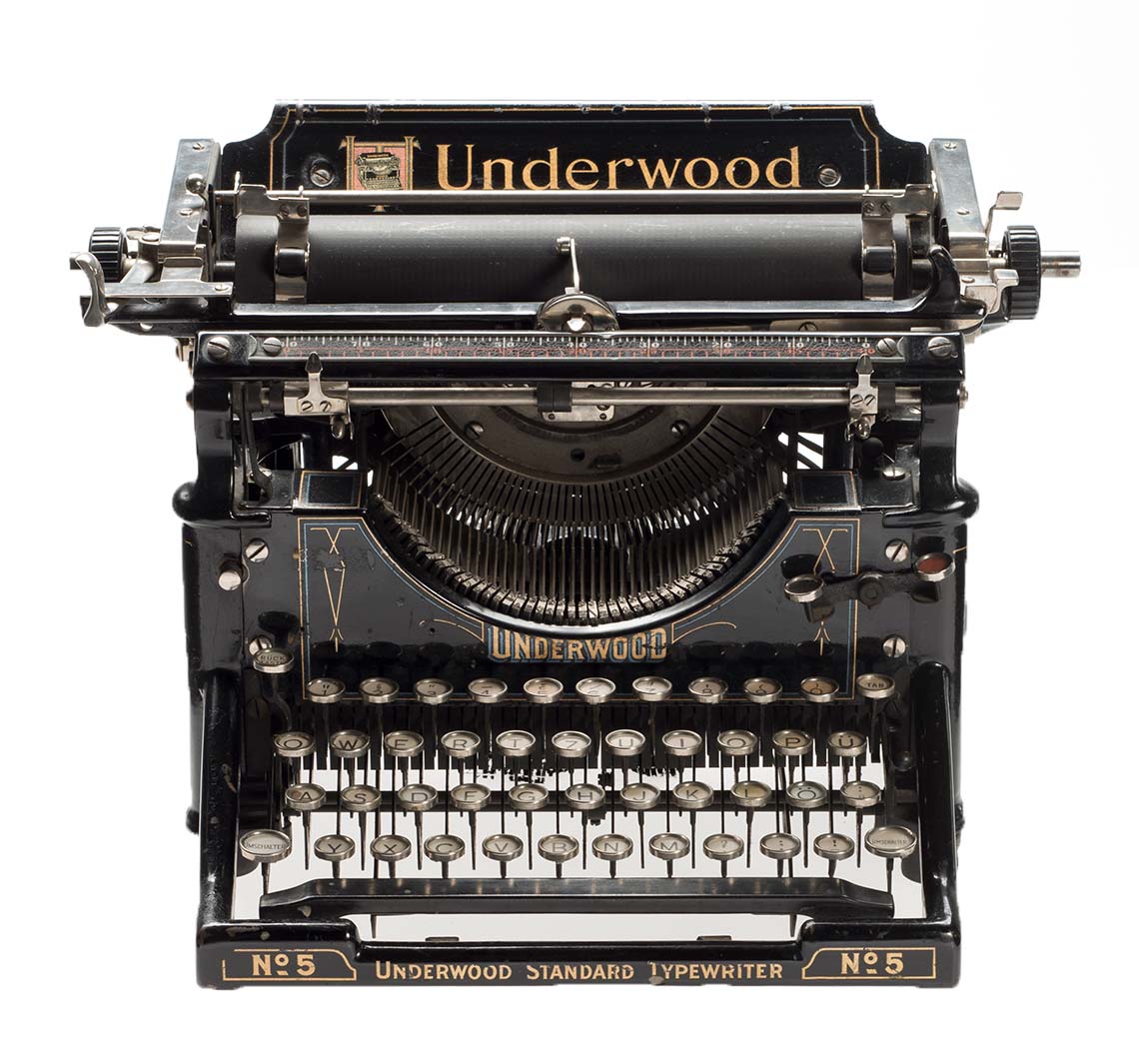25. Standard typewriters
In the next large cabinet you can see an assortment of standard typewriters, the classical office typewriters, the sales messages for which were orientated towards females around the globe - in contrast to the portable typewriters. The most successful typewriter of all time was without doubt the American Underwood, which with over 12 million copies produced, achieved sales success that had never been known before. The machine was invented by Franz Xaver Wagner from Germany who worked on a frontstroke machine with visible script. By designing a new type of typebar mechanism, which was later known as the Wagner mechanism, he managed to design the classic frontstroke machine which was manufactured unchanged for over 30 years and which was used as the basis for most of the major typewriter manufacturers.
The significance of Wagner’s invention and its effects on the market can be compared with the invention by “Sholes & Glidden” and thus formed an important milestone in the development history of the typewriter.
The following anecdote exists on the appearance of this typewriter in the inked ribbon factory of John Underwood. When John Underwood's son went to Remington in order to collect the order for inked ribbons, he was told that from then on they would be making their inked ribbons themselves. Extremely angry about this, seeing as Remington was Underwood's largest customer, he retaliated with: “Then we will also make our typewriters ourselves”. Underwood jr. could never have anticipated that a statement said in anger would soon become reality, let alone the wealth that this typewriter would bring. The success of the Underwood was directly connected to the fact that Remington rapidly lost their monopoly of the market and later became bankrupt.

25. Standard typewriters

Pilot intervention in South Tyrol co-financed by the Cassa di Risparmio di Bolzano Foundation





